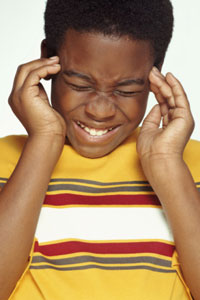Cellulitis is an infection of the skin. It is important to note that facial cellulitis is considered dangerous due to the presence of vital structures in the face such as the eyes, glands, nose and mouth. Children face the highest risk for facial cellulitis due to their age, predisposition to trauma and a number of infections in different parts of the head such as the sinuses.
What are the possible causes?
Bacterial infection is the main culprit behind the development of facial cellulitis. Among children, the bacteria infects the face in various ways – as an infection that spreads from another area such as a bloodstream infection or from the sinuses or other upper respiratory infections, from direct trauma that breaks the skin barrier or from insect bites and allergies that predisposes a child to a superimposed bacterial infection.

What are the signs and symptoms?
The indicative symptoms of cellulitis include swelling and redness of the affected site. Generally, children will end up with fever if other infections such as sinusitis precede the development of cellulitis. The other symptoms of facial cellulitis tend to vary depending on the area affected.
Children with cellulitis around the eye have severe swelling of the area that surrounds the eye. The swelling can be severe in which the eye is completely covered by the infected skin. The swelling of the lymph nodes of the neck is another symptom of facial cellulitis since the lymph nodes become swollen as the body attempts to fight off the infection.
Diagnosing facial cellulitis
A diagnosis of facial cellulitis depends mostly on a physical examination and the presence of swelling and redness of the affected area. The insect bites or direct trauma can often be detected as well. It is vital to observe the functioning of the affected body part such as the presence of pain during eye movement or opening of the mouth.
Bacterial cultures of the area can often identify the causative bacterium. It helps with the treatment of the infection. In some cases, a CT scan can help in identifying deeper infections such as sinusitis or an abscess that can contribute to facial swelling.
Treatment
The treatment for facial cellulitis involves antibiotics. The initial mode of treatment includes oral antibiotics that fight off common bacteria the causes these infections. In areas where methicillin-resistant staphylococcus aureus (MRSA) is prevalent, proper care must be taken by the doctor to prescribe antibiotics that can eliminate this highly resistant bacterium. In case outpatient oral antibiotics could not successfully manage the infection or if there is a deeper infection such as an abscess, intravenous antibiotics must be used.
Considerations to bear in mind
Children who have periorbital cellulitis must be closely assessed in order to detect the presence of orbital cellulitis which is a dangerous infection. The indications of orbital cellulitis include pain during eye movement, popping out of the eye and difficulty with visual acuity tests. Children with orbital cellulitis require treatment using intravenous antibiotics and surgical intervention is required by an ophthalmologist.
